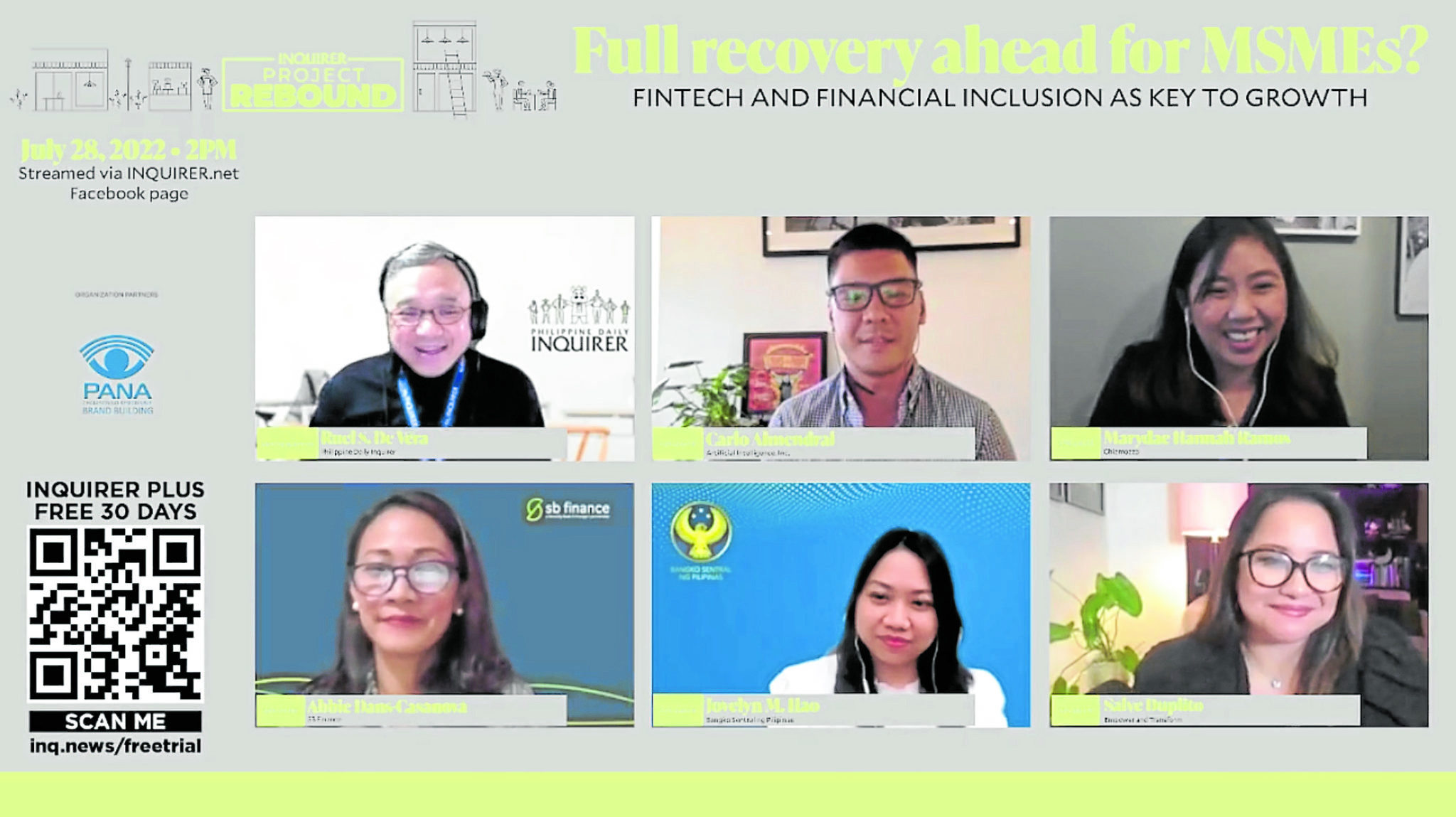Digital finance and digital privacy literacy continue to be a challenge for a lot of Filipinos. Alongside the need for more digital infrastructure, shared and proactive learning in navigating fintech is what we need. But how do MSMEs use fintech to their advantage?
Abbie Dans-Casanova, president and CEO of SB Finance, noted that access to capital is very limited for micro entrepreneurs with high-risk cost and information asymmetry as the main reasons behind lenders’ hesitance to provide support. “Actually, in the past and maybe until now, 60 percent of bankruptcies for small businesses are due to health issues. COVID-19 compounded it very much. Individuals and MSMEs have the same behavior. When there is a disruption of cash flow and continuing expenses, there is income loss. And then, you default on the loans,” acknowledges Dans-Casanova. If the lifeblood of cash flow is access to financial capital, access to credit facilities with the help of fintech can save a business.
Dans-Casanova advises business owners to build a credit-worthy footprint as a verifiable basis for applying for loans. Start by registering the business and opening a separate business bank account. Then, establish a digital presence through digital payment methods, e-commerce platforms and e-wallets.
Apart from approaching private lenders, Dans-Casanova suggests looking into government finance initiatives like the Department of Trade and Industry’s Pondo sa Pagbabago at Pag-asenso, Barangay Micro Business Enterprise, Small Business Corp. and Credit Surety Fund.
Read more: DOF hits inclusivity barriers by pushing for MSME fintech support
Follow us: @inquirerdotnet on Twitter | inquirerdotnet on Facebook

